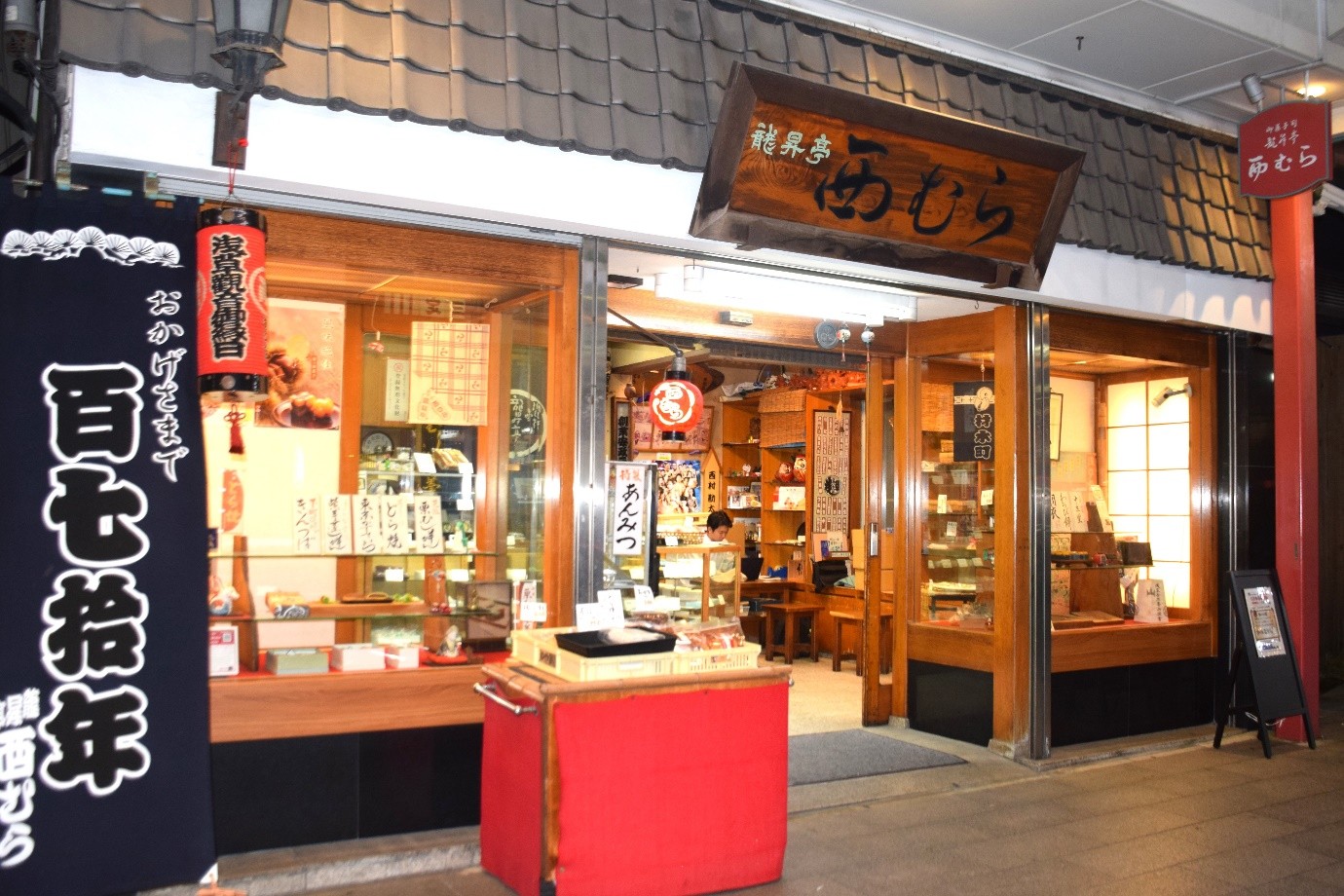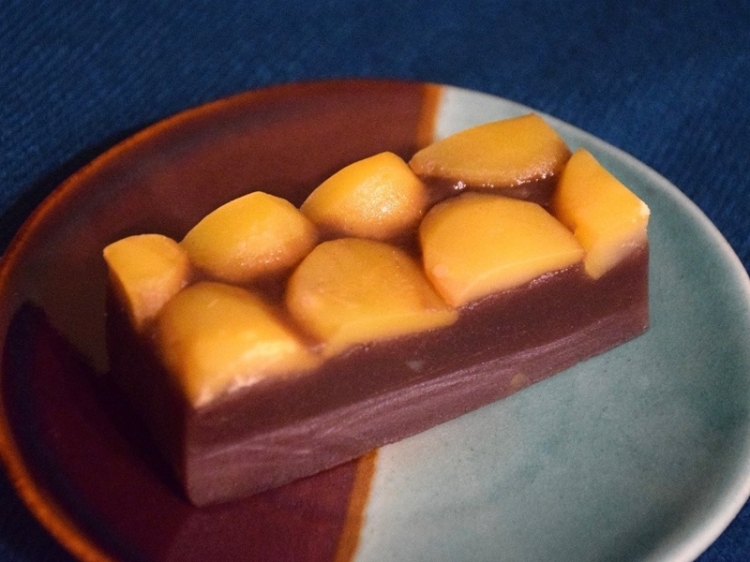ReservationSearch and reserve rooms
Click here to confirm, change or cancel your reservation
航空券付きプラン
Shinkansen accommodation plan
提携法人専用予約
2024.12.10
Ryushotei Nishimura: Japanese sweets for every season, with your happiness in mind
NEIGHBORS

Cloud of Flowers: Is the bell in Ueno or Asakusa?
This famous haiku poem by the master haiku poet Matsuo Basho is reminiscent of the cherry blossoms along the Sumida River in full bloom. The town of Asakusa, decorated with seasonal flowers and trees and bustling with festivals and events almost every month, changes its appearance with each season and has fascinated many cultural figures.
Ryushotei Nishimura, a confectionery shop with 170 years of history and located in front of Kaminarimon, has been making Japanese sweets that reflect the seasons of Asakusa, and is a shop that has been around for 170 years. The foundation of the business, which values not only the taste but also the origins of Japanese sweets and traditional Japanese culture, is the warmth of "caring for people" that is unique to the downtown area.
170 years of walking alongside Asakusa

Nishimura has about 20 kinds of Japanese sweets on display. As you'd expect from a town of friendly people, you'll often find yourself chatting with regular customers.
"Good evening. It's gotten cold."
Kaminarimon Street developed as a temple town for Senso-ji Temple, Tokyo's oldest temple, and is now crowded with tourists from Japan and abroad. Inside Nishimura, which has a heavy wooden signboard befitting a long-established restaurant, sixth-generation owner Nishimura Kanta, his mother Akiko, and grandmother Wakayo enjoy conversation with regular customers as they serve them.
Nishimura opened its doors in 1854, towards the end of the Edo period, in the same location as it is today. It originally operated as a hanging teahouse that offered tea and dumplings to visitors to Sensoji Temple. The ukiyo-e artist Utagawa Hiroshige's work "In front of the Kaminarimon Gate" (1829) depicts the hanging flag of Nishimura along with customers resting at the teahouse, giving an idea of its deep history.
Made by hand, without relying on machines

The smooth texture of the Kurimushi Yokan. Its light sweetness makes it popular with men too.
The signature product is the "Kurimushi Yokan" that has been passed down since the first generation. It is characterized by the fact that the candied chestnuts are piled on top of each other without any gaps, and customers are amazed at how many chestnuts there are. To ensure that the chewy texture is not lost, the amount of koshian and flour is adjusted according to the weather and temperature of the day. This is a masterpiece that shows off the skill of the craftsmen, unique to Nishimura, which believes in making things by hand without using machines.
The "dorayaki" that is also popular with foreign tourists is a great snack to have while sightseeing. The bread-like "Tokyo Kasteira" and the Western-style pastry "Hagoromo" are so popular that customers come from other prefectures to buy them.
Preserving the blessings of the seasons and the culture of Japanese sweets that bring happiness

Matsutake mushroom and camellia confections. The best part of Japanese sweets is being able to visually experience the changing seasons
They aim to create Japanese sweets that correspond to the seasons. Indeed, in November, the shop will be filled with Nerikiri sweets shaped like autumnal motifs such as autumn leaves and matsutake mushrooms, as well as Fuyaki sweets decorated with Christmas designs.
"I think the charm of Japanese sweets is that they can be enjoyed according to the season or event. In the summer, there's refreshing Mizu Daifuku, and during the equinox, there's Ohagi. There's a special feeling that you can only enjoy them at that time of year," says Kanta with a smile.
He also says that he feels there is depth to Japanese sweets as lucky charms.
"On Girls' Day and Children's Day, many people come to buy sakura mochi, chimaki, and kashiwa mochi for their children and grandchildren. Even during the COVID-19 pandemic, the number of customers coming to buy sweets for their families has not decreased."
Giving Japanese sweets to loved ones in hopes of their healthy growth and happiness is a reminder of the preciousness of a culture that cares for others.
Supported by "chic and cool" human kindness

From the left: Jun-san (father), Wakano-san (grandmother), Kanta-san (sixth generation), and Akiko-san (mother)
Kanta studied marine science at university. He says, "I didn't have a strong desire to take over the store." His father, Atsushi, the fifth-generation owner, never forced him to do so. But after graduating, he went to train at a Japanese confectionery shop in Kanazawa, which he says was "a very natural progression."
"My seniors and juniors (who live in Asakusa) all have family businesses and have taken over before they knew it. Asakusa itself is that kind of town." Now his younger brother, Daikichi, also works in the workshop and has begun his career as a Japanese confectioner.
He has also been supported by the human kindness that is so characteristic of the downtown area. Asakusa has a sad history, including earthquakes and air raids, but "even when there were difficulties, the local community supported each other and overcame them with a 'whatever!' attitude. We have family-like relationships with the neighboring stores, and we're friends rather than competitors. I like the local character of Asakusa, where the whole community comes together to enliven the town."
Senso-ji Temple is visited by approximately 30 million people every year. Even though it is one of the most popular tourist destinations in Japan, the temple never rests on its laurels. "What do we want to protect and what do we want to change? We want to think about this together with our colleagues and cherish our connections with our customers."
Asakusa residents unanimously agree that Nishimura is a famous store. They may be attracted to the store's sincere attitude toward Japanese sweets, as well as its warmth, which shows trust in family and friends, caring for customers, and loving the town.
龍昇亭 西むら
電話:03-3841-0665
住所:東京都台東区雷門2-18-11
HP:https://ryushoutei.com/
SNS:https://www.instagram.com/ryushoutei_nishimura/
※営業時間や定休日についての詳細は上記のリンク先にてご確認ください。




